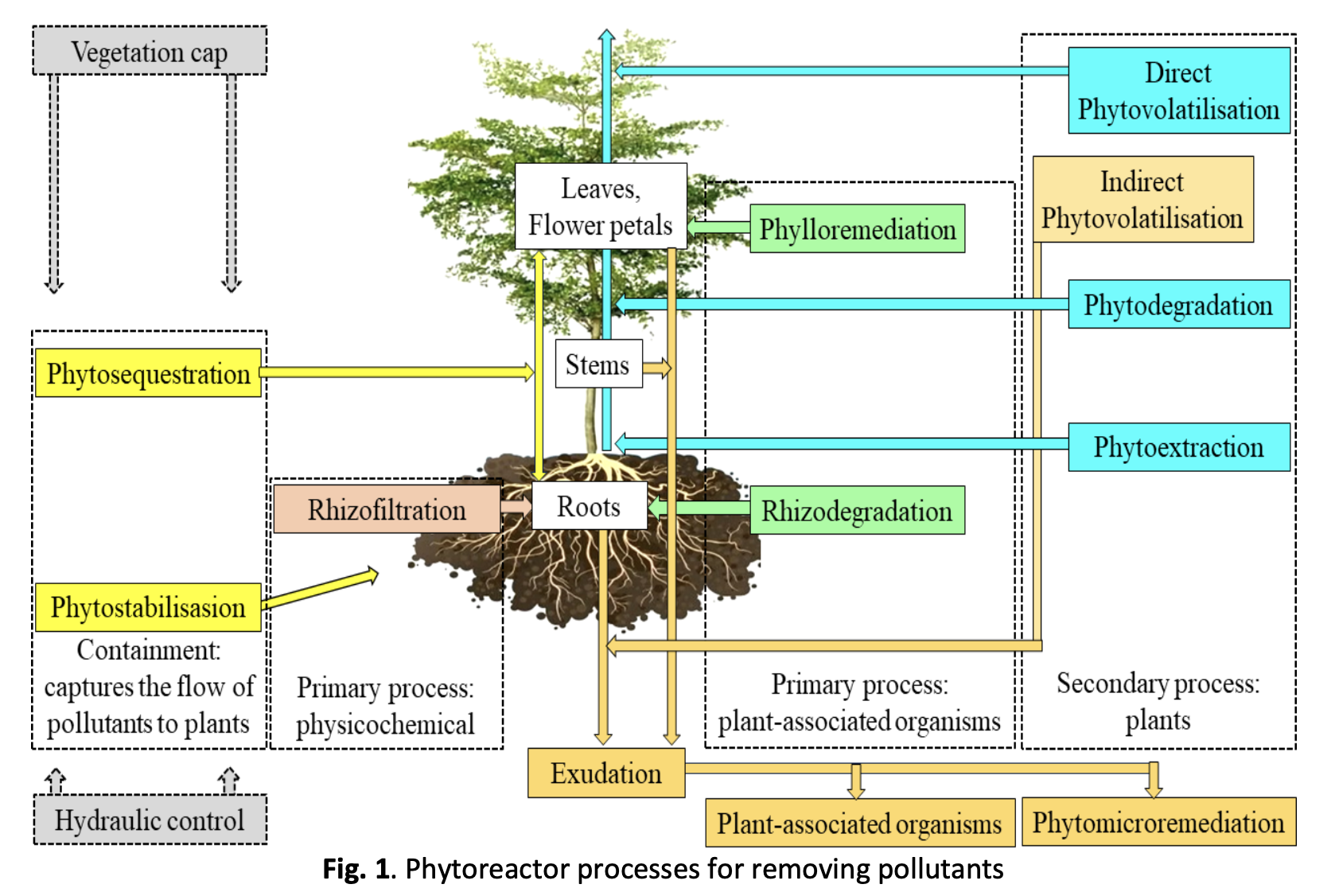Phytoreactor for Arsenic Biodetoxification: An Integrated Sequential Process of Phytoremediation Involving Multi-Kingdom Organisms
DOI:
https://doi.org/10.37934/araset.36.2.2135Keywords:
Biodegradation, Ecosystem, Environmental Pollutants, Metalloids, PlantsAbstract
Phytoremediation of polluted environments has received attention and developed rapidly in recent decades. Plant performance assessment is conducted around the effectiveness and efficiency of reducing the concentration of pollutants and certain plant-associated organisms. While supporting these advances, this paper aims to develop integrated phytoremediation as a pollutant treatment reactor involving all processes and multi-kingdoms of organisms, referred to as phytoreactor. The data collected comes from the results of previous studies related to various kinds of phytoremediation processes. Screening and selection of data were based on criteria for differences in plant processes, involvement of various plant-associated organisms, and aesthetics. An arsenic pollutant, one of the most toxic metalloids and ubiquitous, the kingdom’s involvement of plant-associated organisms between aboveground and belowground plant parts. A new perspective in phytoremediation is creating a phytoreactor that integrates three sequential processes. Starting with the containment of toxic pollutants, followed by a primary process consisting of physicochemical and biological processes, and completed by a secondary process in plants, which produces nontoxic environmental media conditions. The primary biological processes are carried out in the rhizosphere and phyllosphere. The involvement of the plant-associated organism kingdom is different in the rhizosphere and phyllosphere due to the suitability of the habitat, the type of pollutant, and the aesthetics of the application of the phytoreactor. Phytoreactor for the remediation of polluted environments involves synergistic multi-kingdoms of plant-associated organisms for specific types of pollutants in the rhizosphere and phyllosphere.
Downloads





























